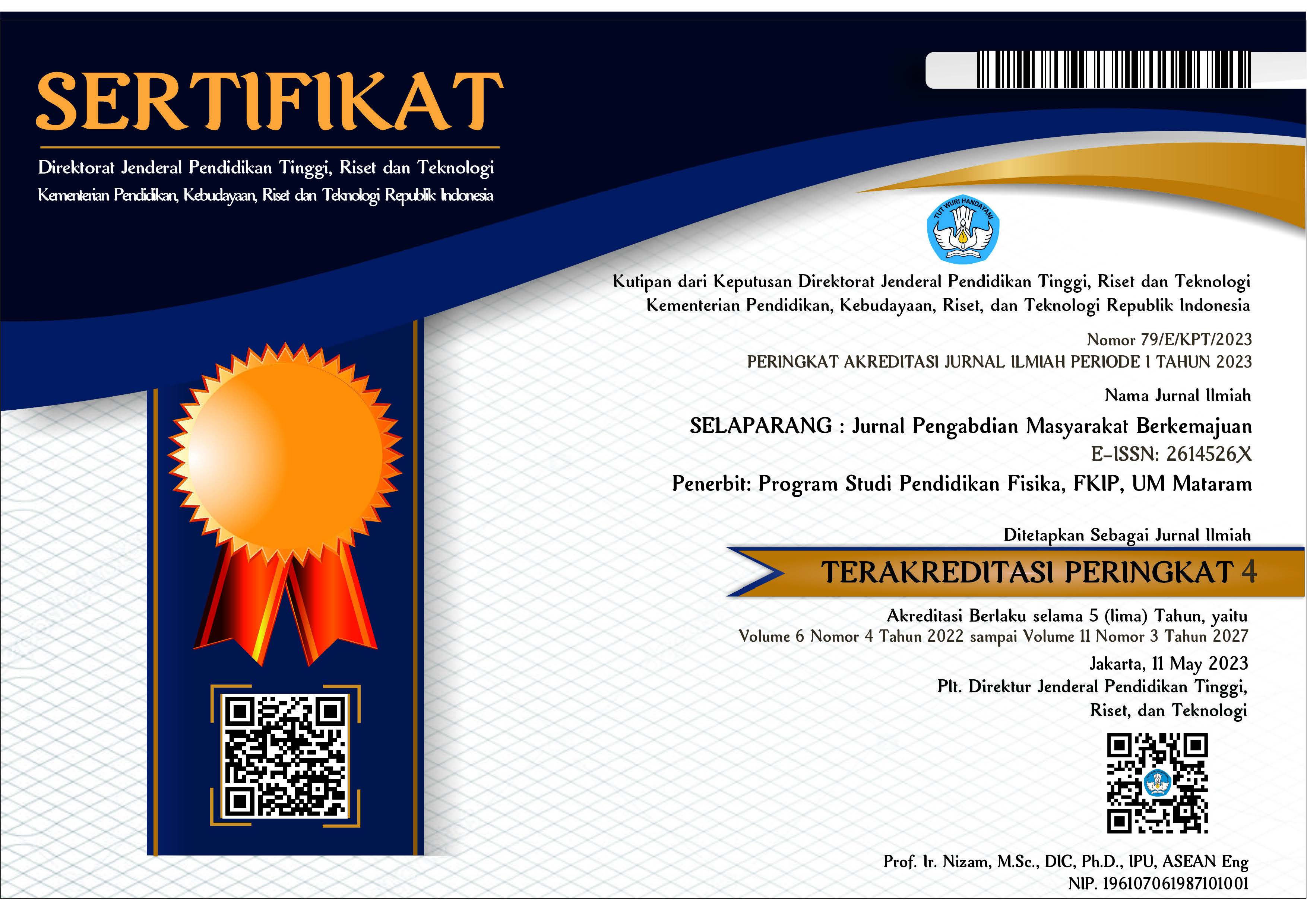MENGEKSPLORASI LANSKAP LINGUISTIK (LINGUISTIC LANDSCAPES) PADA PENGAJARAN BAHASA INGGRIS UNTUK PELAJAR USIA DINI DI LINGKUNGAN DESA TANTUHA
Abstract
ABSTRAK
Pengajaran Bahasa Inggris untuk pelajar usia dini sangat penting pada era globalisasi. Kecakapan berbahasa Inggris membantu pelajar dalam segala sendi kehidupan, baik sebagai sarana komunikasi, perdagangan, sosial budaya, hiburan, ilmu pengetahuan, pendidikan, dan teknologi. Literasi dan keterampilan berbahasa Inggris dengan baik dan lancar harus dimulai dari usia dini. Namun, membangkitkan motivasi pelajar usia dini bukanlah hal mudah. Apalagi memperkenalkan bahasa Inggris sebagai bahasa asing di lingkungan nya, tentunya membutuhkan teknik pengajaran yang mampu menarik atensi pelajar. Mengeksplorasi pembelajaran yang tidak berfokus di kelas dapat menjadi alternatif bagi pelajar yaitu dengan mengeksplorasi bahan belajar yang ada disekitar pelajar atau dikenal dengan Linguistic Landscapes (LLs). Kegiatan belajar terdiri dari: pengenalan (Introductory), eksplorasi terbimbing (Guided-exploration), pasca analisis (Post-analysis), dan kegiatan menjembatani (Bridging activities) (Solmaz, 2021). Untuk melihat penerapan dan bagaimana proses pembelajaran tersebut, peneliti melakukan kegiatan eksplorasi terhadap pelajar usia dini dengan rentang umur 7-12 tahun. 12 dari 32 pelajar dini secara random terpilih sebagai sampel studi pengabdian kepada masyarakat ini. Studi ini berkolaborasi dengan mahasiswa calon guru dengan mengumpulkan data observasi hasil penerapan pendekatan LLs dalam interaksi belajar bersama pelajar usia dini. Hasil studi ini memperlihatkan bahwa (1) keberadaan LL mampu meningkatkan motivasi pelajar usia dini; (2) interaksi selama proses belajar sangat baik; (3) pelajar usia dini mampu memamfaatkan lingkungan sekitar sebagai sumber belajar otentik.
Kata kunci: lanskap linguistic; pengajaran bahasa inggris; pelajar usia dini
ABSTRACT
Teaching English to young learners is very important in this era of globalization. Proficiency in English helps students in all aspects of life, both as a means of communication, trade, socio-culture, entertainment, science, education, and technology. Good and fluent English literacy and skills considerably start at an early age. However, raising the motivation of early childhood students is not an easy task. Moreover, introducing English as a foreign language in their environment, of course, requires teaching techniques that are able to attract the attention of students. Exploring learning that is not focused in the classroom can be an alternative for students, namely by exploring learning materials that are around students or known as Linguistic Landscapes (LLs). Learning activities consist of: Introduction, Guided-exploration Post-analysis, and Bridging activities (Solmaz, 2021). To see the implementation and how the learning process is, the researchers conducted exploration activities for early childhood students with an age range of 7-12 years. 12 out of 32 early childhood students were randomly selected as the sample for this community engagement study. This study collaborated with student teacher candidates by collecting observational data on the results of applying the LLs approach in learning interactions with early childhood students. The results of this study showed that (1) the existence of LL can increase the motivation of early childhood students; (2) the interaction during the learning process is very good; (3) early childhood students are able to take advantage of the surrounding environment as an authentic learning resource
Keywords: linguistic landscapes; teaching english; young learners.
Keywords
Full Text:
PDFReferences
Alabay, E., Arikan, A., Balcikanli, C., Course, S., Cosgun Ogeyik, M., Celik, S., Cetintas, B., Cubukcu, F., Doner Yilmaz, D., Sundar, S., Gursoy, E., Hismanoglu, M., Kirkgoz, Y., Korkmaz, S., Kose, O., Kucukoglu, H., Ozmen, K. S., Sarac, H. S., Sert, O., … Zorba, M. G. (2019). Teaching English to Young Learners : An Activity- based Guide for Prospective Teachers (E. Gursoy & A. Arikan (eds.); Issue January 2012). https://www.researchgate.net/profile/Muhlise_Oegeyik/publication/330824567_Teaching_English_to_Young_Learners_An_Activity-based_Guide_for_Prospective_Teachers/links/5c554c6792851c22a3a280a8/Teaching-English-to-Young-Learners-An-Activity-based-Guide-for-Pr
Gorter, D., Cenoz, J., & der Worp, K. van. (2021). The linguistic landscape as a resource for language learning and raising language awareness. Journal of Spanish Language Teaching, 8(2), 161–181. https://doi.org/10.1080/23247797.2021.2014029
Gunantar, D. A. (2016). The Impact of English as an international language on English language teaching in Indonesia. The Impact of English As an International Language on English Language Teaching in Indonesia, 10(2), 141–151. https://doi.org/10.15294/lc.v10i2.5621
Manan, S. A., David, M. K., Dumanig, F. P., & Naqeebullah, K. (2015). Politics, economics and identity: mapping the linguistic landscape of Kuala Lumpur, Malaysia. International Journal of Multilingualism, 12(1), 31–50. https://doi.org/10.1080/14790718.2014.905581
Setyaningrum, A. (2016). The role of English education as the solution of the social welfare problem in Indonesia. Qudus International Journal of Islamic Studies, 4(2).
DOI: https://doi.org/10.31764/jpmb.v6i3.10939
Refbacks
- There are currently no refbacks.

This work is licensed under a Creative Commons Attribution-ShareAlike 4.0 International License.
______________________________________________________
Jurnal Selaparang
p-ISSN 2614-5251 || e-ISSN 2614-526X
EDITORIAL OFFICE:



















